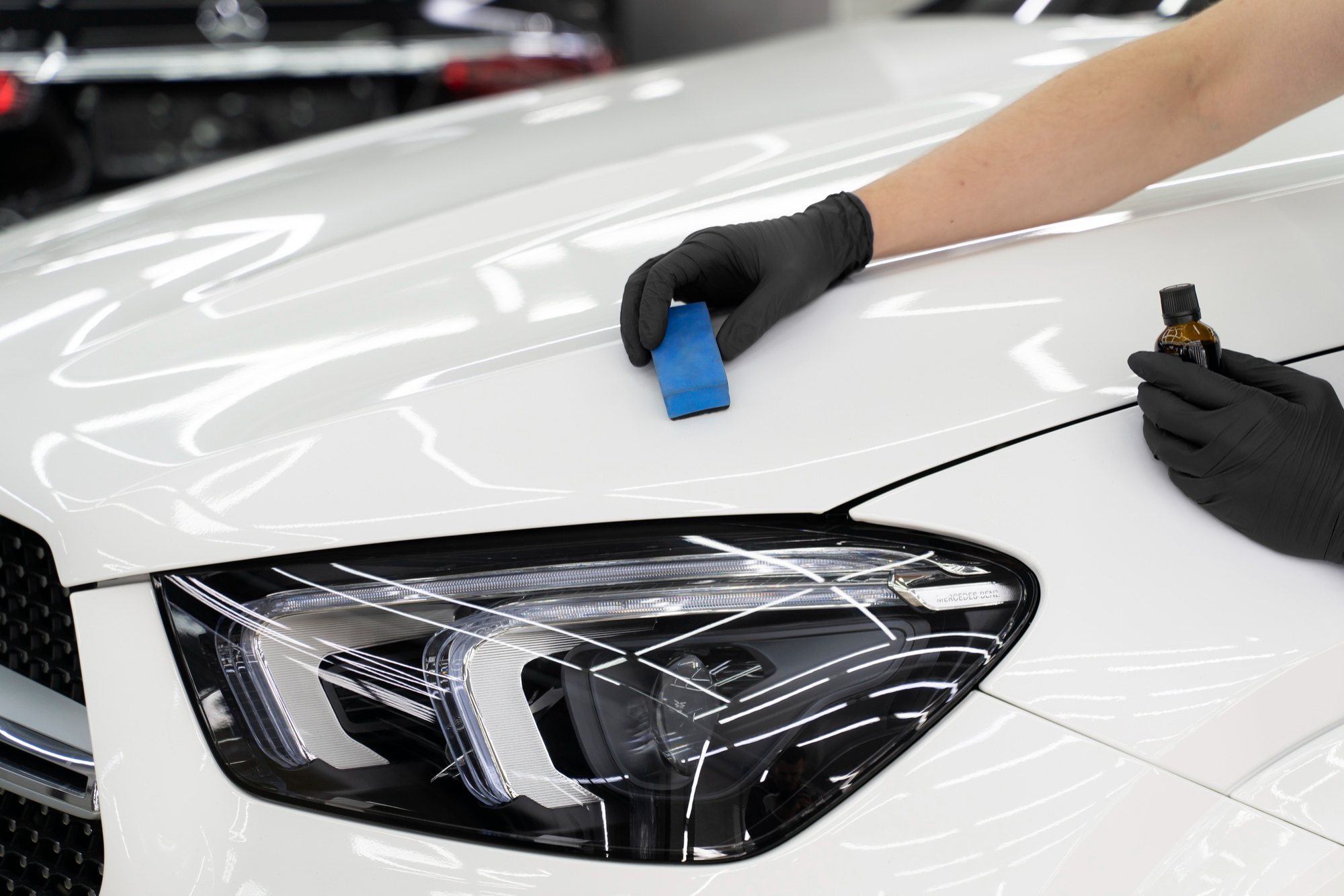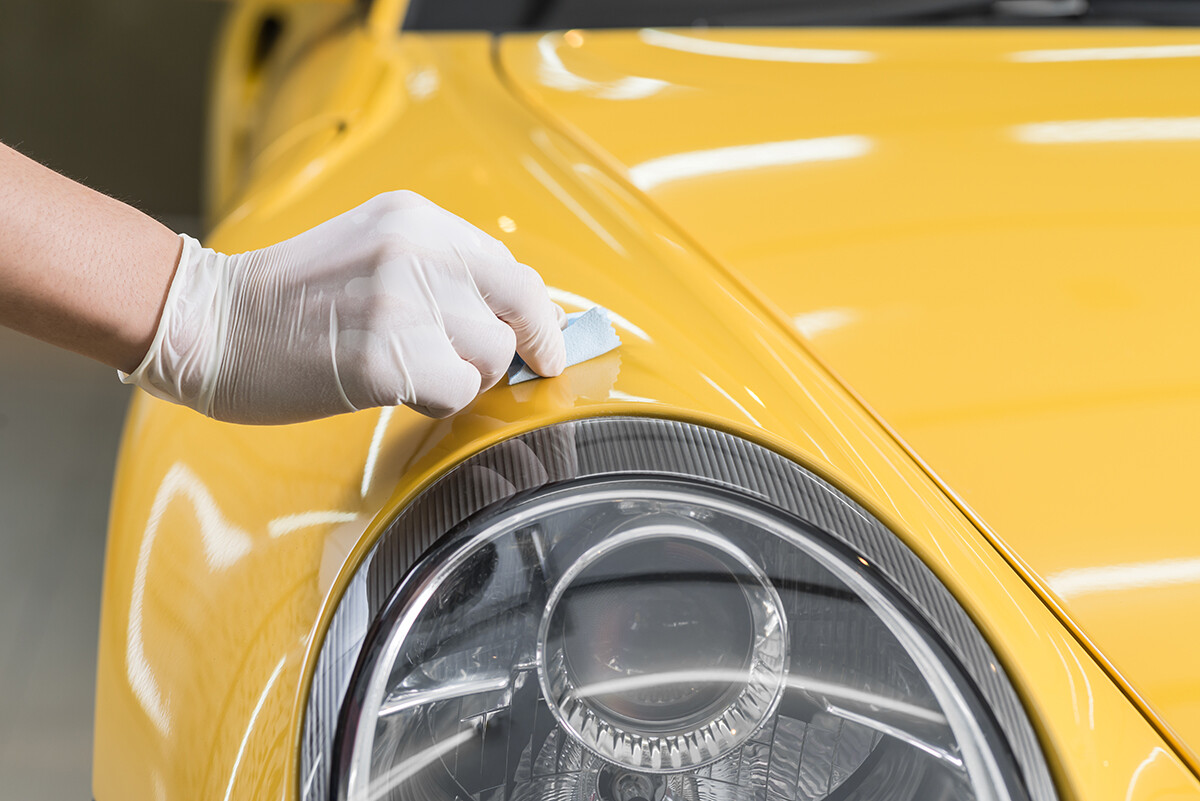Ceramic Coatings San Jose: Boost and Safeguard Your Vehicle's Complete
Ceramic Coatings San Jose: Boost and Safeguard Your Vehicle's Complete
Blog Article
Unveiling the Science Behind Ceramic Coatings: How Does It Job and Why Is It Above Conventional Options?
Ceramic finishings have been gaining appeal in numerous markets for their exceptional efficiency and toughness. Understanding just how ceramic finishings work and why they surpass standard choices is important for those seeking to boost the longevity and strength of their products.
The Chemistry of Ceramic Coatings
In understanding ceramic layers, delving right into the complex chemistry behind their structure is vital for realizing their performance and sturdiness. Ceramic coverings are primarily composed of silicon dioxide (SiO2), which creates a safety and solid layer when applied to numerous surfaces. This chemical framework provides extraordinary resistance to heat, chemicals, and corrosion, making ceramic coatings extremely sought after for a large range of applications.
The chemistry behind ceramic finishes involves the development of covalent bonds between silicon and oxygen atoms, producing an inflexible network that enhances the layer's sturdiness and resilience. Furthermore, the visibility of various other components such as titanium, light weight aluminum, and zirconium additional improves the covering's residential or commercial properties, supplying increased hardness and adhesion to surfaces.
Comprehending the chemical composition of ceramic coverings enables the personalization of solutions to fit particular requirements, whether it be for automobile, industrial, or domestic objectives. By harnessing the power of chemistry, ceramic finishes remain to lead the way for remarkable defense and efficiency in various industries.
Benefits of Ceramic Coatings

As a result, ceramic coatings make cleaning and maintaining surface areas much easier and less taxing. In general, the plethora of benefits used by ceramic finishings make them a superior alternative contrasted to typical covering techniques.
How Ceramic Coatings Bond
Ceramic coatings bond to surfaces through a procedure that involves molecular adhesion and chemical interactions. When a ceramic covering is put on a surface area, it creates a solid bond by chemically adhering to the surface area at a molecular level. This bond is created via the formation of covalent bonds, which are resilient and incredibly strong. The ceramic covering's molecules penetrate the pores of the surface, developing a tight hold that withstands splitting up.
In addition, the chemical communications in between the ceramic coating and the surface additionally enhance the bond. ceramic coatings san jose. These communications enable the ceramic coating to develop a seamless and continuous layer externally, offering exceptional protection and sturdiness. Unlike conventional layers that may rest on the surface without completely bonding, ceramic finishings create an irreversible bond that is resistant to chemicals, UV rays, and severe ecological problems

Essentially, the bonding system of ceramic layers makes certain a durable and effective protective layer that exceeds typical coating choices. This remarkable bond adds to the sturdiness, scratch resistance, and longevity of ceramic finishings, making them a recommended choice for various applications.
Resilience of Ceramic Coatings
The remarkable durability of ceramic coatings originates from their durable molecular attachment and chemical interactions with surfaces, making certain a durable protective layer that exceeds standard coating choices. When applied, ceramic coverings create a solid bond with the substrate, developing a resistant barrier against numerous ecological stressors such as UV radiation, chemicals, and abrasions. This bond is so safe that it can endure the rigors of daily use without degrading or breaking down swiftly.
Unlike traditional finishings that might break down with time, ceramic finishes maintain their honesty for an extended duration, providing durable protection for the underlying surface. The strong molecular framework of ceramic layers withstands chipping, fading, and peeling, making sure that the surface area stays shielded and aesthetically pleasing for years to come. This sturdiness not only reduces the demand for constant reapplications yet additionally saves time and cash in the long run. Overall, the phenomenal longevity of ceramic coatings makes try this site them a remarkable choice for safeguarding a large range of surface areas in numerous applications.
Ceramic Coatings Vs. Standard Choices
In comparison to standard covering techniques, ceramic coverings offer a distinctive blend of longevity and protective capacities that set them apart in numerous surface area defense applications. Standard options such as wax or sealants offer a momentary layer of protection that can subside swiftly, needing regular reapplication. On the various other hand, ceramic coatings create a solid bond with the surface, producing a semi-permanent or permanent obstacle that is highly resistant to abrasion, chemicals, UV rays, and severe temperature levels.
In addition, ceramic coatings use exceptional hydrophobic homes contrasted to standard coatings. The hydrophobic nature of ceramic coverings causes water to bead up and roll off the surface area, lugging dirt and contaminants with it. This self-cleaning effect helps to keep the surface area's cleanliness and gloss for prolonged durations, reducing the requirement for constant upkeep.
In addition, ceramic finishings have a thicker layer compared to traditional options, giving enhanced scratch resistance and protection versus small impacts. This toughness ensures long-lasting performance and helps preserve the aesthetic allure of the treated surface for a prolonged duration.
Verdict
Finally, the science behind ceramic layers lies in their chemical structure and bonding homes, making them above conventional alternatives. The advantages of ceramic finishings include increased durability and security for surface areas. By comprehending exactly how ceramic finishings work and their benefits over conventional options, one can make informed decisions when thinking about coating alternatives for different applications.
Unlike conventional finishes that may rest on the surface area without completely bonding, ceramic layers produce view website an irreversible bond that is resistant to chemicals, UV rays, and rough environmental conditions.
The exceptional longevity of ceramic finishes stems from their durable molecular bond and chemical interactions with surfaces, ensuring a durable protective layer that exceeds traditional finishing choices.Unlike typical finishes that navigate to these guys might degrade over time, ceramic layers preserve their honesty for an extended duration, providing resilient defense for the underlying surface.In comparison to standard coating methods, ceramic coatings offer an unique blend of sturdiness and protective capabilities that set them apart in different surface area protection applications. By recognizing how ceramic finishings work and their benefits over conventional options, one can make informed choices when taking into consideration finishing alternatives for various applications.
Report this page